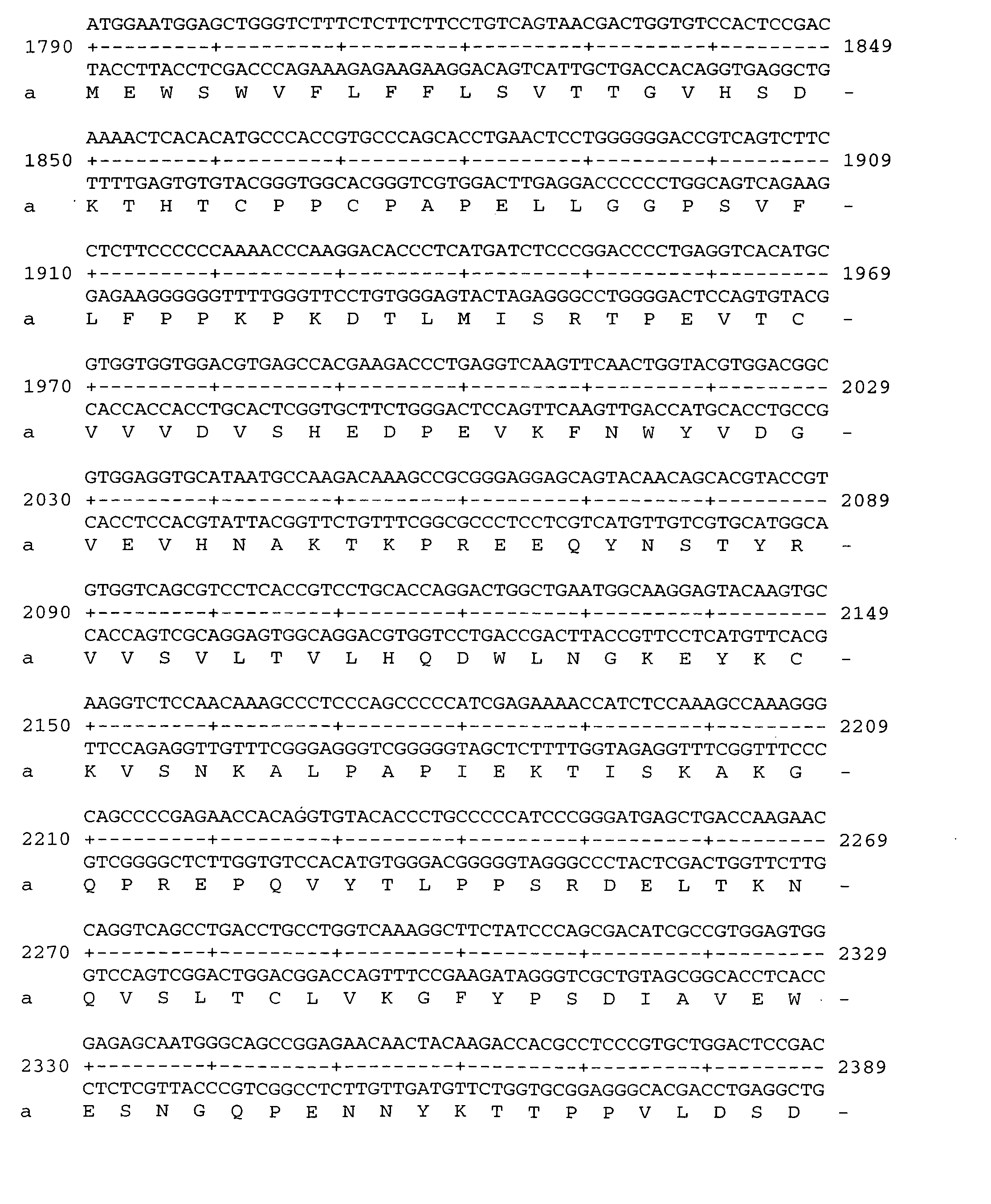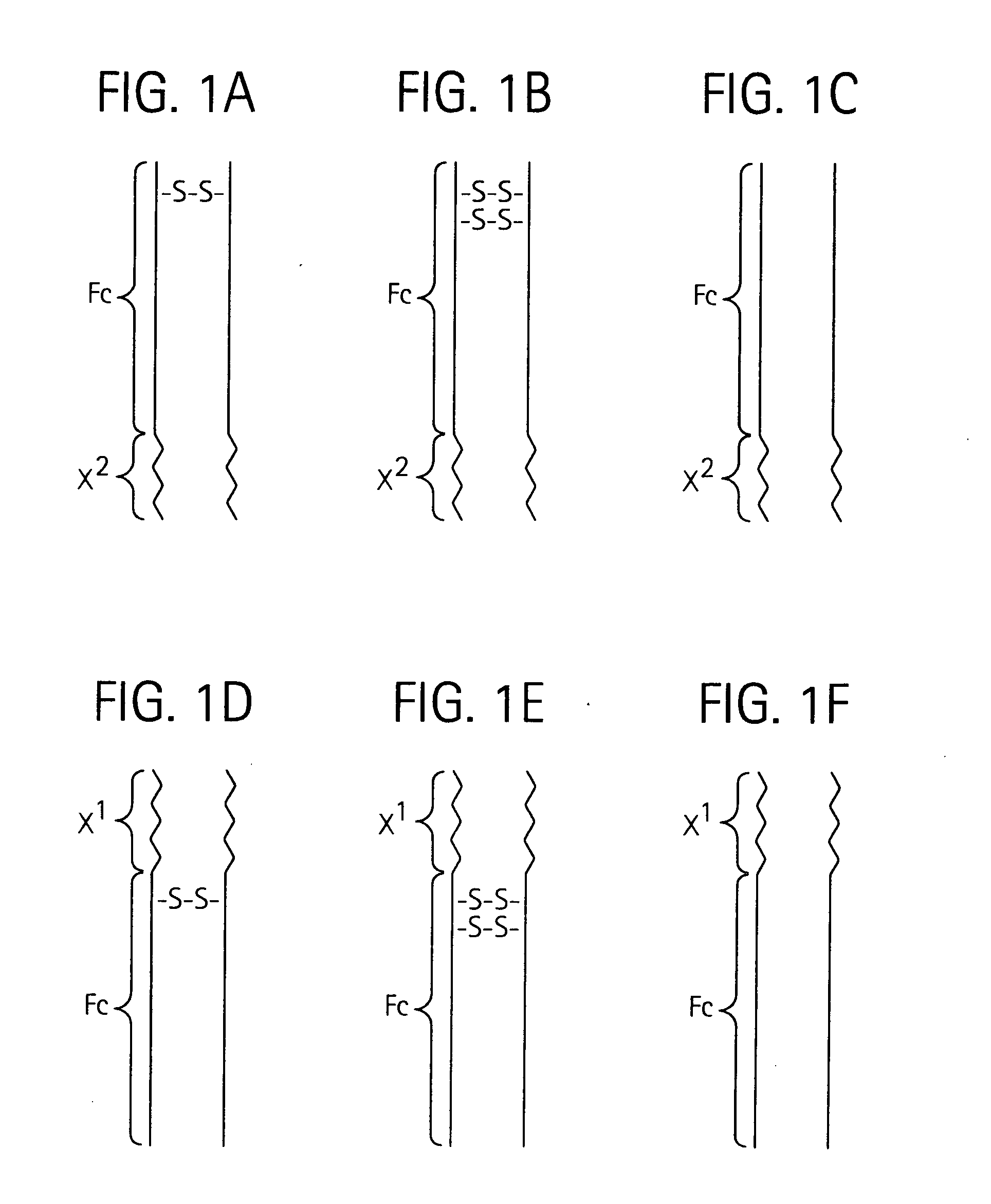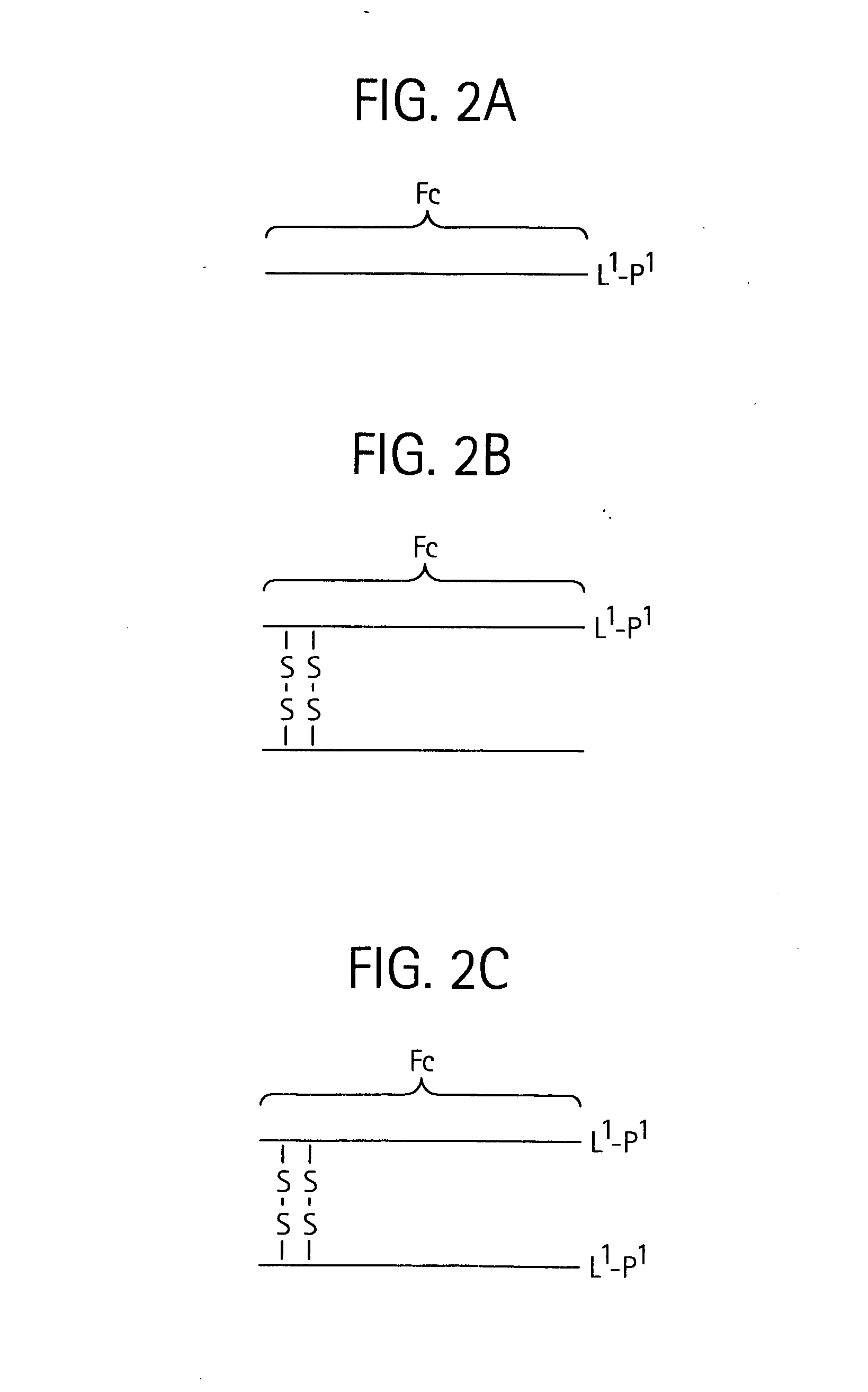Toxin peptide therapeutic agents
a technology of toxin peptides and therapeutic agents, applied in the field of biochemical arts, can solve the problems of complex process, difficult to obtain small molecules with selectivity toward some of these targets, and more complex process synthetically
- Summary
- Abstract
- Description
- Claims
- Application Information
AI Technical Summary
Benefits of technology
Problems solved by technology
Method used
Image
Examples
working examples
[0542] The compositions described above can be prepared as described below. These examples are not to be construed in any way as limiting the scope of the present invention.
example 1
Fc-L10-ShK[1-35] Mammalian Expression
[0543] Fc-L10-ShK[1-35], also referred to as “Fc-2xL-ShK[1-35]”, an inhibitor of Kv1.3. A DNA sequence coding for the Fc region of human IgG1 fused in-frame to a linker sequence and a monomer of the Kv1.3 inhibitor peptide ShK[1-35] was constructed as described below. Methods for expressing and purifying the peptibody from mammalian cells (HEK 293 and Chinese Hamster Ovary cells) are disclosed herein.
[0544] The expression vector pcDNA3.1(+)CMVi (FIG. 13A) was constructed by replacing the CMV promoter between MluI and HindIII in pcDNA3.1(+) with the CMV promoter plus intron (Invitrogen). The expression vector pcDNA3.1(+)CMVi-hFc-ActivinRIIB (FIG. 13B) was generated by cloning a HindIII-NotI digested PCR product containing a 5′ Kozak sequence, a signal peptide and the human Fc-linker—ActivinRIIB fusion protein with the large fragment of HindIII-NotI digested pcDNA3.1(+)CMVi. The nucleotide and amino acid sequence of the human IgG1 Fc region in pc...
example 2
Fc-L-ShK[2-35] Mammalian Expression
[0554] A DNA sequence coding for the Fc region of human IgG1 fused in-frame to a monomer of the Kv1.3 inhibitor peptide ShK[2-35] was constructed using standard PCR technology. The ShK[2-35] and the 5, 10, or 25 amino acid linker portion of the molecule were generated in a PCR reaction using the original Fc-2xL-ShK[1-35] in pcDNA3.1(+)CMVi as a template (Example 1, FIG. 14). All ShK constructs should have the following amino acid sequence of
SCIDTIPKSRCTAFQCKHSMKYRLSFCRKTCGTC(SEQ ID NO: 92)
with the first amino acid of the wild-type sequence deleted.
[0555] The sequences of the primers used to generate Fc-L5-ShK[2-35], also referred to as “Fc-1xL-ShK[2-35]”, are shown below:
cat gga tcc agc tgc atc gac acc / / SEQ ID NO: 661atc;cat gcg gcc gct cat tag c; / / SEQ ID NO: 662
[0556] The sequences of the primers used to generate Fc-L10-ShK[2-35], also referred to as “Fc-2xL-ShK[2-35]” are shown below:
cat gga tcc gga gga gga gga agc / / SEQ ID NO: 663agc tgc...
PUM
| Property | Measurement | Unit |
|---|---|---|
| length | aaaaa | aaaaa |
| hydrophobic | aaaaa | aaaaa |
| affinity | aaaaa | aaaaa |
Abstract
Description
Claims
Application Information
 Login to View More
Login to View More - R&D
- Intellectual Property
- Life Sciences
- Materials
- Tech Scout
- Unparalleled Data Quality
- Higher Quality Content
- 60% Fewer Hallucinations
Browse by: Latest US Patents, China's latest patents, Technical Efficacy Thesaurus, Application Domain, Technology Topic, Popular Technical Reports.
© 2025 PatSnap. All rights reserved.Legal|Privacy policy|Modern Slavery Act Transparency Statement|Sitemap|About US| Contact US: help@patsnap.com



